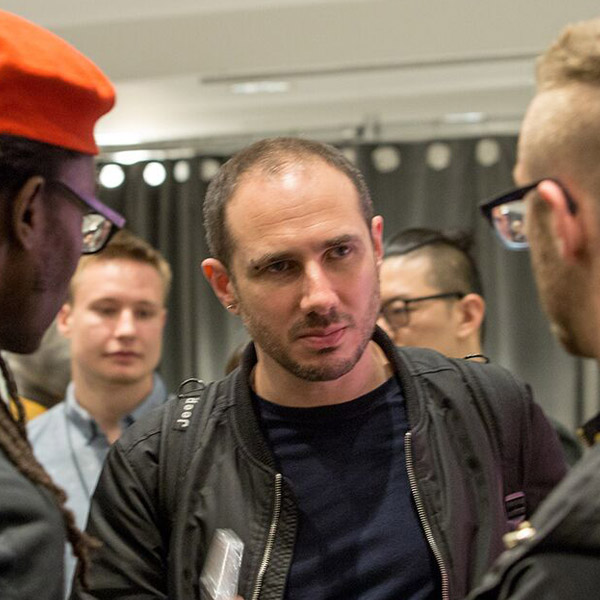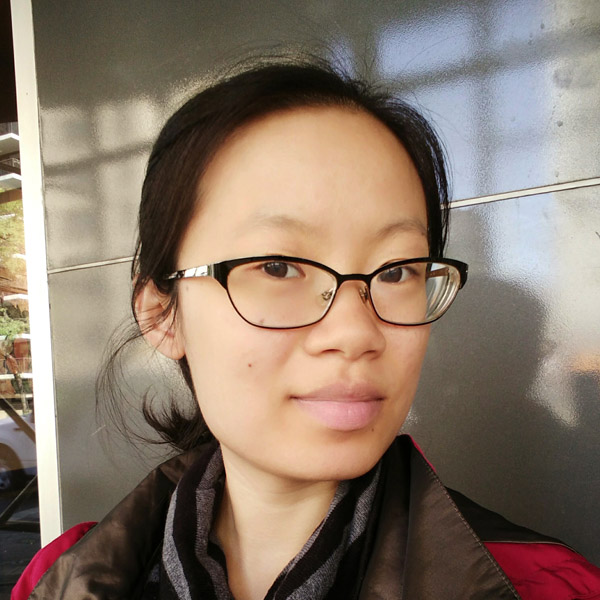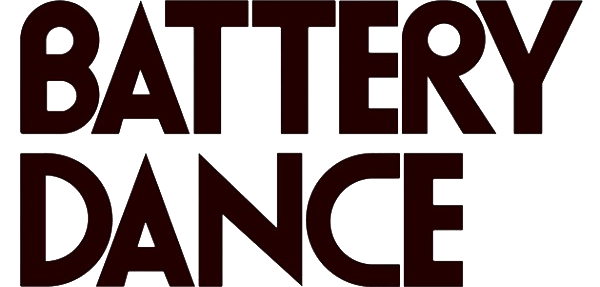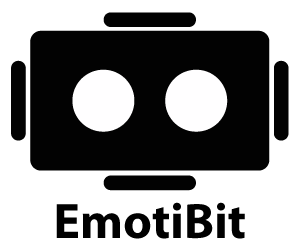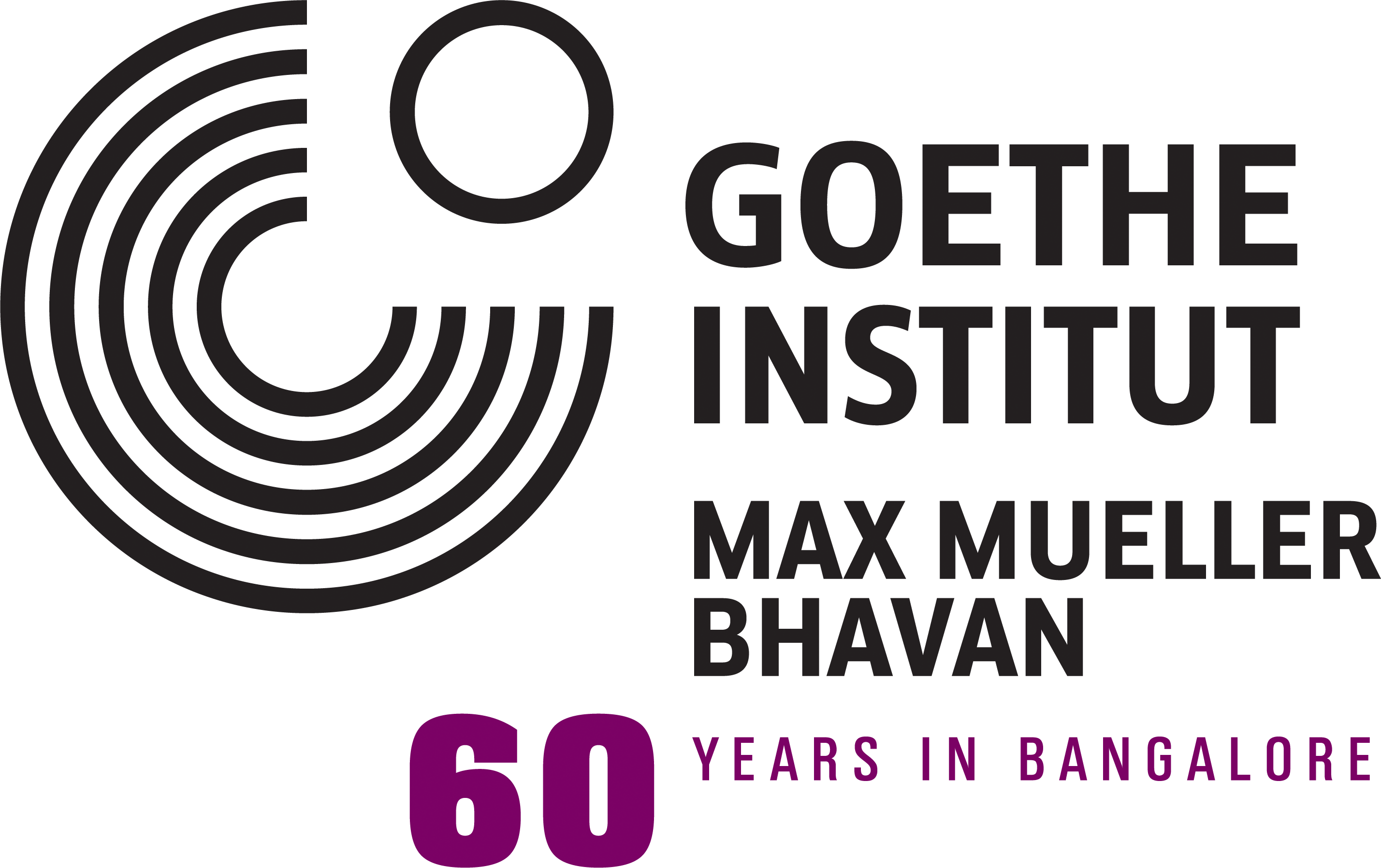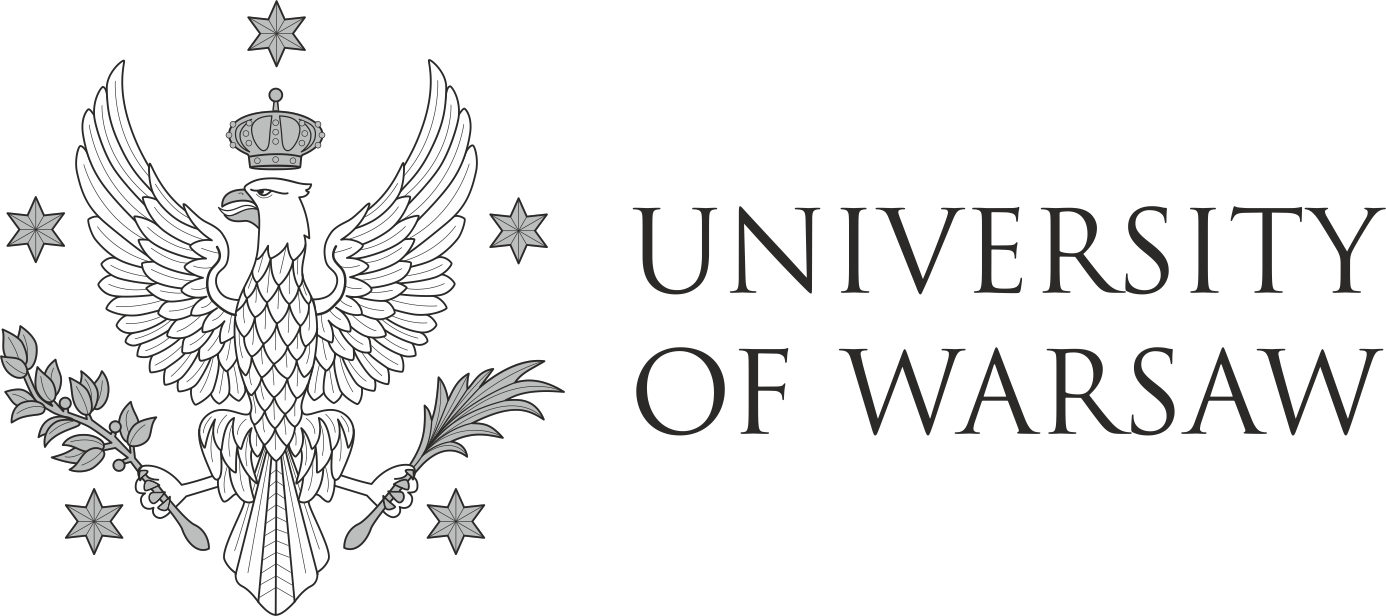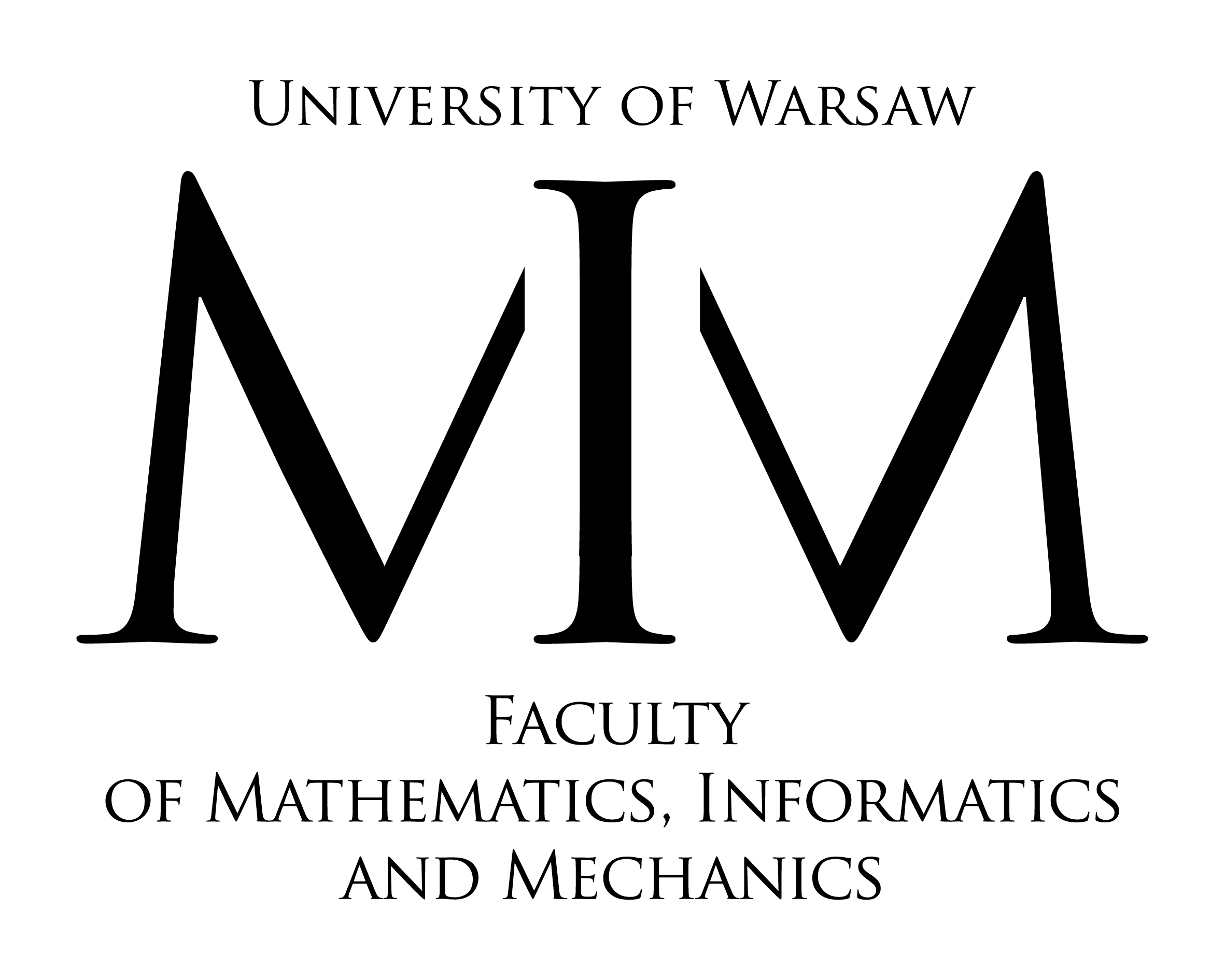A team from Art-A-Hack™ 2018 Special Edition — City University of New York
Team members:
- Andrew McWilliams
- Amay Kataria
- Anny Chang
- Yidan Zeng
The Climate Consciousness team investigated public understanding of the true nature of the climate crisis. Their project, The 2° Window, displays the sliver of time within which humankind must restructure global energy infrastructure to avoid locking in a 2 degree global temperature rise, which is widely viewed as catastrophic.
The team began with research on the way global warming is conceived, and what it really means. They came to the conclusion that climate change is an existential human threat, often misclassified as a purely ‘environmental’ issue.
The true main threat of global warming is that it portends a collapse of civilization, which could be “locked in” within a very short timeframe.
This is because cumulative heat-trapping emissions cannot be reversed, and will drive up temperatures for centuries. This causes ever-increasing levels of drought, extreme weather, sea-level rise, all compounding each other in unison.
This will inevitably lead to ever-increasing refugee crises, dwindling food and resources, and war.
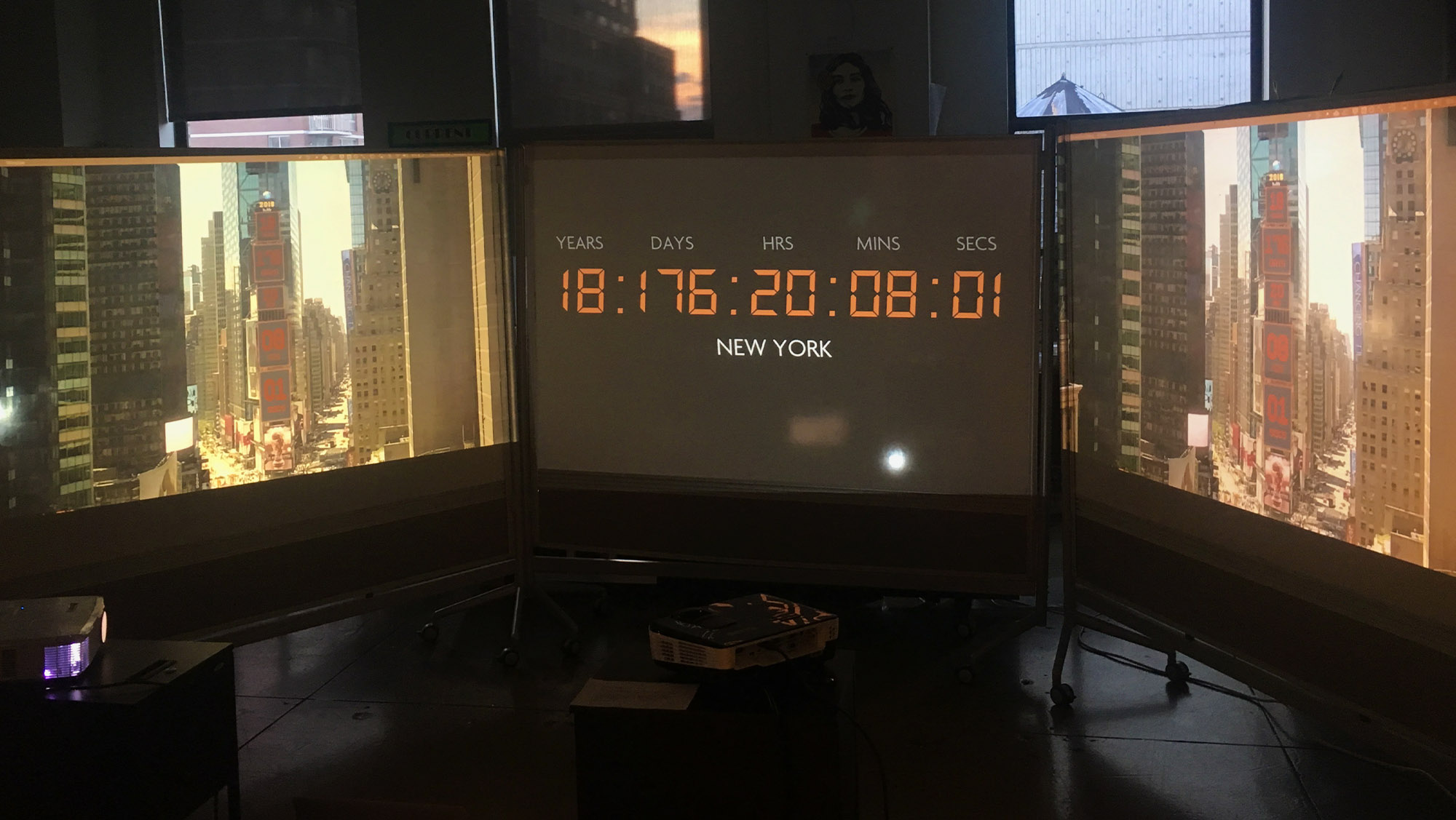
The team asks: given the urgency and the threat, shouldn’t this countdown be displayed in every global city, to inject an urgency into public discourse about global warming which it often seems to lack?
To instigate this idea during the Art-A-Hack co-creation sessions, the team mocked up a livetime clock countdown installation. The current calculated time is overlaid onto CCTV and other footage of major cities, including New York, Tokyo and Paris.

The clock countdown is based on work by Nick Evershed at The Guardian, who calculated the timeline for a data visualization, based on IPCC reports. The Guardian gave their blessing to this project, and even published the source code of their calculations as shown on the site, to support the team’s efforts.
The philosophy of this team is that the clock and its numbers are already out there. They just aren’t being seen by people enough. How can we bring the numbers closer to people, so they can consider them in their everyday lives?
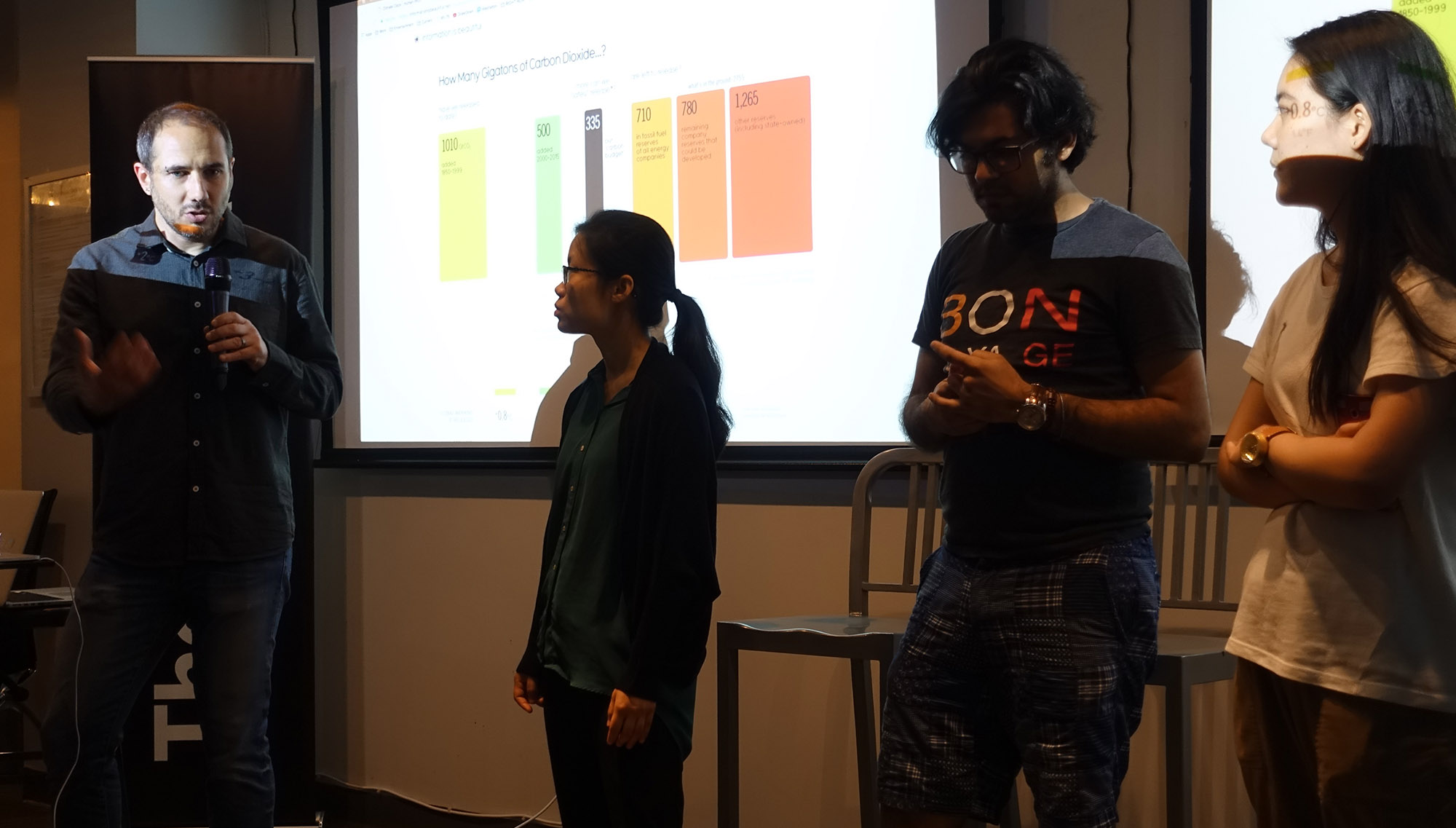
The grid page created by the team helps to answer that question, showing timezone-adjusted versions of the clock. This way, people can see the countdown to the day they will wake up in their city to a world with 2°C locked in.
Moving forward, the team is approaching cities with plans to show the clock, aiming to bring the images into reality. The aim is to insert this timeframe forcefully into general public discourse, and to drive demand for solutions that match the scale and urgency of the need at hand.


